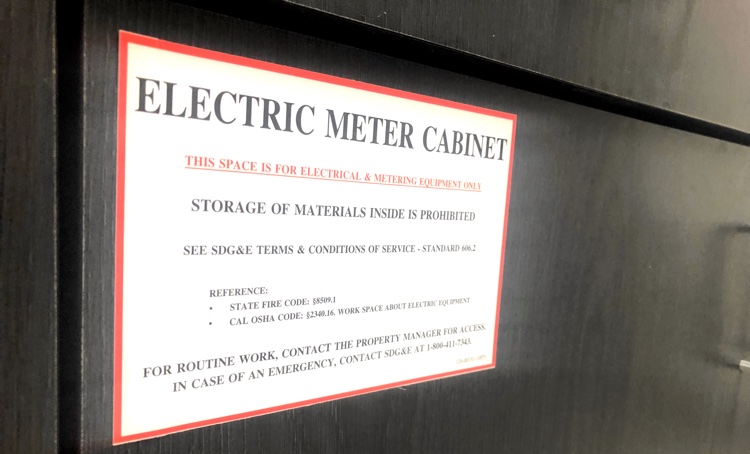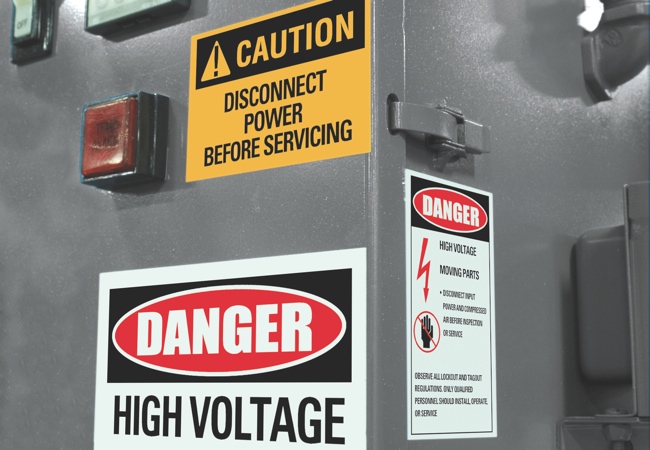Available Fault Current Labels

Since 1897, the NEC (National Electrical Code) has set the standards for safety while handling electrical wiring and equipment. Available fault current labels are one of the newer additions for promoting safety, added in 2011. These labels help electricians and engineers ensure that a system has been properly installed.
What Are Available Fault Current Labels?
Available fault current is the maximum current that could flow through a power system if there’s a fault like a short circuit. Per the NEC (National Electric Code), field equipment must be marked with available fault current labels. Knowing the available fault current is essential for designing circuit breakers, fuses, and relays. In the event of a fault, these devices interrupt the flow of current and prevent damage and must be able to handle the maximum current. Displaying available fault current labels where they can be seen helps everyone in the area make safer decisions in case of a fault.
Available fault current labels are attached to electrical equipment like electrical panels, switchgear, motor control centers, and other electrical distribution equipment. Every time equipment is added or removed, a new calculation must be made to determine the new available fault current. This ensures that no one is cutting corners when installing electrical equipment.


Requirements for Fault Current Labels
Using available fault current labels helps electricians, engineers, and inspectors ensure that equipment is properly matched to the available fault current. These labels should be placed on machines, major cables, generators, and transformers where they can easily be seen. Fault current labels also ensure your organization is compliant with NEC codes and standards. According to the 2017 version of section 110.24, available fault current labels must:
- Be marked in the field (i.e. not by the manufacturer)
- Include the available fault current
- Include the date of the calculation
- Show the entire calculation, not just the available fault current
- Be durable enough to withstand environmental conditions
- Be recalculated and marked whenever changes are made to the electrical system
Types of Fault Current Labels
Working with electrical systems often comes with a risk. Labeling plays a major role in keeping electricians and engineers safe. Here are some other types of fault current labels used to increase safety in the field.
- Warning labels: Warning labels are used to warn about potential hazards with electrical equipment. They usually include text like “Warning: Electrical Hazard” or “Caution: High Voltage.”
- Arc fault current labels: Arc fault current labels explicitly state the potential for arc faults within an electrical system. Arc faults occur when an electrical discharge travels through the air between conductors. These labels may include text like “Arc Fault Hazard” or “Danger: Arc Flash Risk.”
- Arc flash labels: Arc flash labels state the potential severity of an arc flash event. Arc flash is a type of electrical explosion that can occur when an arc fault generates major heat and energy. Arc flash labels usually include the level of PPE required and may also feature a pictogram representing the level of hazard.
- Electrical danger labels: Electrical danger labels state the danger posed by electrical equipment or systems, including text like “Danger: High Voltage” or “Electrical Hazard–Keep Out.” Electrical danger labels are used to alert people to the presence of high voltages or other electrical hazards so they can take precautions to stay safe.
If you need available fault current labels, warning labels, arc flash labels, or any other electrical label, Coast Label can help. We understand how essential fault current labels are and use only the best materials to craft our labels. We’ll work with you one-on-one to engineer labels that will withstand extreme conditions to stay legible and intact.
